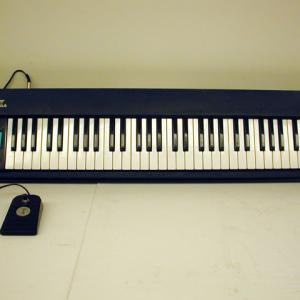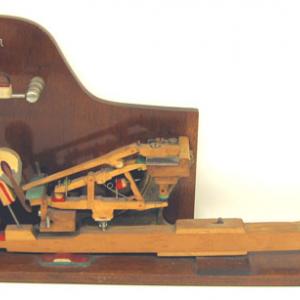College of Liberal Arts & Sciences
3D50.10 - Keyboards - Piano and Organ
Plug the desired keyboard into the amplifier. Attach the appropriate keyboard pedals as needed.
The action for a piano is shown.
- Alan D. Bernstein, "Tuning the Ill-Tempered Clavier", AJP, Vol. 46, # 8, Aug. 1978, p. 792.
- John C. Bryner, "Stiff-String Theory: Richard Feynman on Piano Tuning", Physics Today, December 2009, p. 46.
- Klaus Wogram, "Acoustical Research on Pianos Part 1: Vibrational Characteristics of the Soundboard", Musical Acoustics, p. 872.
- Klaus Wogram, "Acoustical Research on Pianos Part 1: Vibrational Characteristics of the Soundboard", Musical Acoustics, p. 778.
- Klaus Wogram, "Acoustical Research on Pianos Part 1: Vibrational Characteristics of the Soundboard", Musical Acoustics, p. 694.
- Gabriel Weinreich, "Coupled Piano Strings", Musical Acoustics, p. 1474.
- Yaakov Kraftmakher, "7.16, Simple Electro-Musical Instruments", Experiments and Demonstrations in Physics, ISBN 981-256-602-3, p. 485.
Disclaimer: These demonstrations are provided only for illustrative use by persons affiliated with The University of Iowa and only under the direction of a trained instructor or physicist. The University of Iowa is not responsible for demonstrations performed by those using their own equipment or who choose to use this reference material for their own purpose. The demonstrations included here are within the public domain and can be found in materials contained in libraries, bookstores, and through electronic sources. Performing all or any portion of any of these demonstrations, with or without revisions not depicted here entails inherent risks. These risks include, without limitation, bodily injury (and possibly death), including risks to health that may be temporary or permanent and that may exacerbate a pre-existing medical condition; and property loss or damage. Anyone performing any part of these demonstrations, even with revisions, knowingly and voluntarily assumes all risks associated with them.


